Ultimate Guide to Growing and Caring for Iceberg Roses
Hi friends I have been loving a new flower lately and I can’t wait to share everything I have learned about growing and caring for iceberg roses! Iceberg roses are one of the most popular and beloved types of roses in the world. As an avid gardener, I have always been drawn to their pristine white blooms, lovely fragrance, and disease-resistant nature. Plus, their nonstop blooms make them hard not to love!
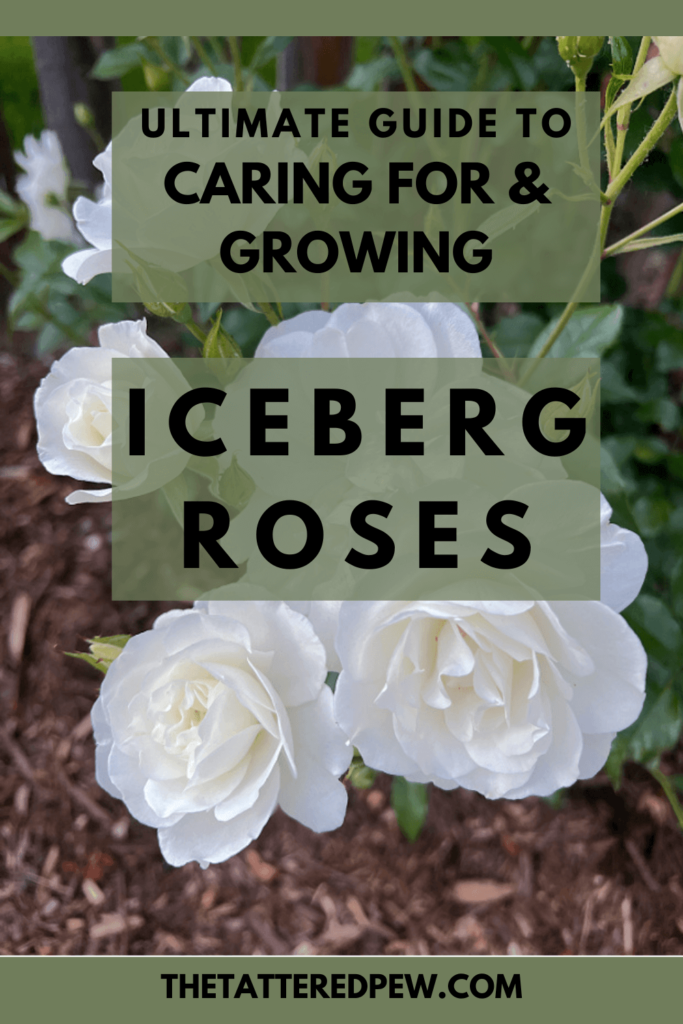
*As an Amazon Associate, I earn from qualifying purchases. This post contains other affiliate links too for your convenience. Click here to read my full disclosure policy.
Disclaimer
Just to be clear, I am by no means a flower or rose expert. I just love getting my hands dirty and sharing what works for me in hopes that it will work for you too. I encourage you to do Iceberg rose research like I did (mainly on google and Pinterest) to see how they will best work for you and your garden zone. We live in northern Colorado which is zone 5b, but these tips are very general and will work for all zones.
Ultimate Guide to Growing and Caring for Iceberg Roses
One of the things that makes Iceberg roses so special is their ability to bloom continuously throughout the growing season. This makes them an excellent choice for gardeners who want a plant that will provide them with beautiful blooms for months.
I first fell in love with this variety when I saw them in my mom’s yard. Now both my sister and I have several Iceberg rose bushes of our own!
Additionally, Iceberg roses are relatively easy to care for and can thrive well with very simple growing conditions. Whether you’re a seasoned gardener or just starting out, these roses are an excellent choice for anyone looking to add a touch of elegance to their garden.
More Flower Growing Guides
- 12 Things You Need to Know About Hydrangeas
- The Lazy Girl’s Guide to Planting Colorful Zinnias from Seed
- Tips & tricks for the Best Peonies
What are Iceberg Roses?
Iceberg roses, also known as Rosa ‘Korbin,’ are a type of floribunda rose that produces clusters of small or large white or pink flowers. ( I prefer the white variety but a few of mine have pink speckles!)
They are well-known for their hardiness and capacity to withstand colder temperatures, making them a preferred option for gardeners in a variety of hardiness zones. Iceberg roses can grow as either a rose shrub or a climber, ranging from 3 to 12 feet tall.
Is Iceberg Rose a climber or rambler?
Iceberg roses are neither climbers nor ramblers. They are classified as floribunda roses, which means they are bushy, compact plants that produce clusters of blooms rather than long canes ideal for climbing.
However, some gardeners may train Iceberg roses to climb or cascade over structures with proper support and pruning techniques, but their natural growth habit is more shrub-like.
I am working on training mine to climb my fence!
![]()
![]() Are Iceberg roses high maintenance?
Are Iceberg roses high maintenance?
I am a low maintenance if not lazy gardener! Iceberg roses are prized for their low-maintenance nature.
They are highly resilient and adaptable to various climates and soil conditions. These roses require minimal care, making them ideal for new gardeners or those with busy schedules (like me).
Routine maintenance tasks include regular watering, occasional fertilization, and pruning to remove dead or diseased wood and encourage healthy growth.
Overall, Iceberg roses are considered one of the easiest and most rewarding roses to grow in gardens, requiring far less attention compared to other varieties. This is WHY I LOVE them!!!
Caring for Iceberg Roses
When it comes to plant care, Iceberg roses are relatively low-maintenance. They prefer full sun and well-draining soil, and regular watering is recommended, especially during dry spells. I have mine on a drip system so they have consistent water.
Iceberg roses are also known for their disease resistance, making them a great choice for gardeners who want a beautiful and healthy garden.
Iceberg roses are a beautiful and easy-to-care-for type of rose that can add a stunning touch to any garden or collection. Whether you’re an experienced gardener or a novice, Iceberg roses are a great choice for anyone looking to add some beauty to their outdoor space. I promise, they are so easy!
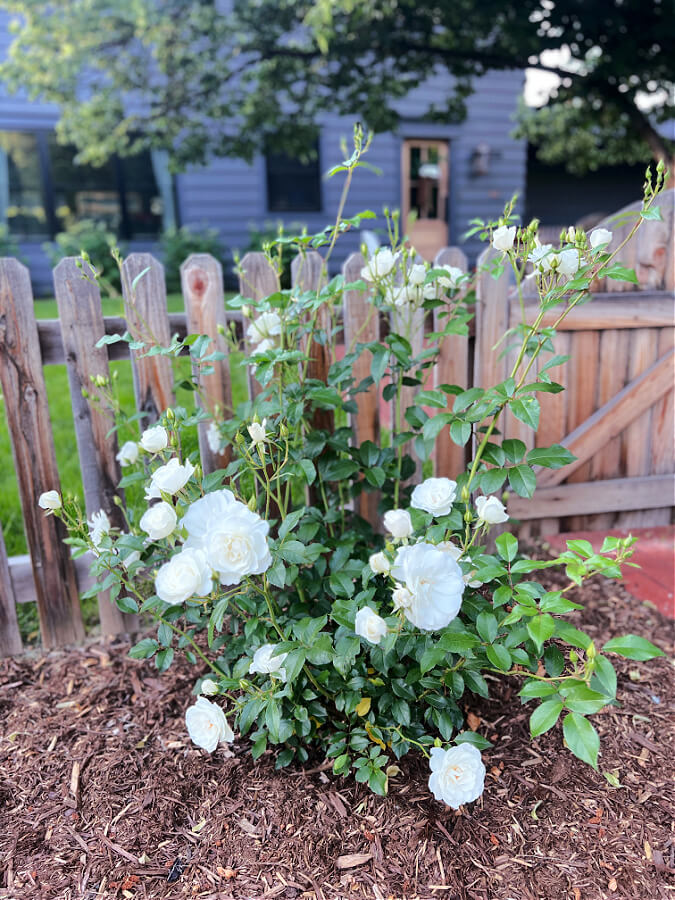
Types of Iceberg Roses
There are several types to choose from when it comes to Iceberg Roses. In this section, I will discuss the different kinds of Iceberg Roses, including Iceberg Floribunda Roses, Climbing Roses, Shrub Roses, English Roses, and David Austin Roses.
Iceberg Floribunda Rose
The Iceberg Floribunda Rose is the original Iceberg Rose that originated from Kordes in Germany. It is the most popular color and type of Iceberg Rose, and it comes in a beautiful white color. This rose is very hardy and easy to care for, making it a favorite among rose lovers.
Climbing Roses
Climbing Roses are perfect for adding height and dimension to your garden. The Iceberg Climbing Rose is no exception. It is a vigorous grower with long, flexible canes that can be trained to grow up a trellis or over an archway. The Iceberg Climbing Rose produces beautiful clusters of white blooms that are fragrant and long-lasting.
I recently planted a climbing Iceberg rose in front of our front yard fence in hope to train it to climb our wood fence.
Shrub Roses
Shrub Roses are known for their hardiness and ease of care. The Iceberg Shrub Rose is a compact, bushy plant that produces abundant white blooms throughout the growing season. This rose is perfect for planting on a mixed border or as a focal point in your garden.
Colored Roses
Typically Iceberg Roses are white. However, they have colored varieties as well. Colored iceberg roses are a type of hybrid tea rose that is a popular choice for cut flowers and can also be grown in the garden. There are many different varieties of colored iceberg roses, including:
- Blushing Pink: The petals of this Iceberg rose have a lovely light pink blush
- Brilliant Pink: This Iceberg rose resembles Blushing Pink, but it has a stronger pink coloration that can sometimes take on the appearance of a creamy pink depending on the temperature.
- Burgundy: This rose can produce deep dark red or deep purple blooms, each with a slightly lighter reverse.
- Golden: This is a newer blended yellow-blooming Iceberg rose. The foliage on this Iceberg rose is glossy green, and the fragrance is mild and pleasing.
Colored iceberg roses are a beautiful and versatile addition to any garden. They are easy to care for and provide a long-lasting bloom.
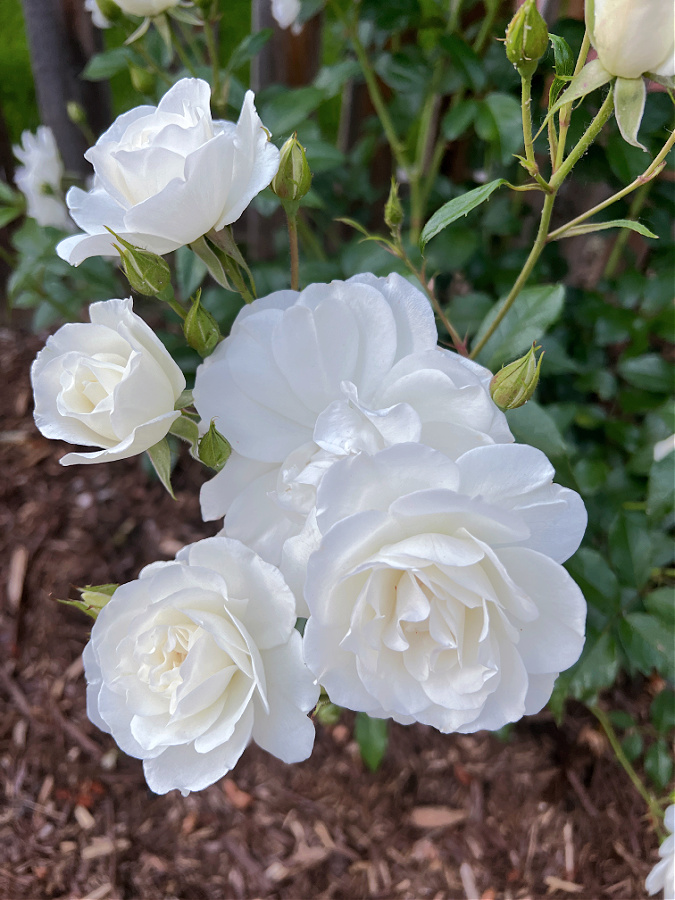
Growing Iceberg Roses
Iceberg roses are a great choice if you’re looking for a beautiful and easy-to-grow rose variety. Here are some tips on how to grow these lovely plants.
Planting Iceberg Roses
When planting Iceberg roses, choose a spot in your garden that receives full sun. These roses need at least six hours of direct sunlight daily to thrive. Make sure the soil is well-draining, and add compost or other organic matter to improve soil quality.
Is it better to plant iceberg roses in pots or ground?
I like to plant iceberg roses in containers or in the ground. Currently we have 4 along our front fence. If you’re planting in a container, choose a pot that’s at least 15 inches wide in diameter. Use a high-quality potting mix and make sure the container has drainage holes.
So where you plan them is totally up to you!
Companion Plants for Iceberg Roses
Iceberg roses look great when planted with other flowers and plants. Some good companion plants for Iceberg roses include:
- Lavender
- Salvia
- Peonies
- Catmint
- Geraniums
- Hydrangeas
- Marigolds
- Shasta daisies
- Boxwood
- Zinnias
These plants complement the white or pink blooms of Iceberg roses and create a beautiful garden display.
Care and Maintenance of Iceberg Roses
Iceberg roses are relatively low-maintenance plants, but they do need some care to stay healthy and beautiful. Here are some tips on growing and caring for Iceberg roses:
- Water regularly: Iceberg roses require regular watering, particularly in hot, dry weather. Water only when the soil surface is just beginning to become dry, about every two days.
- Fertilize: Use an all-purpose fertilizer to feed your Iceberg roses every two to four weeks during the growing season. (THIS is my favorite as well as this one too!)
- Prune: Prune your Iceberg roses in late winter or once the frost is gone to remove dead or damaged wood and encourage new growth.
- Watch for pests and diseases: Iceberg roses are generally resistant to pests and diseases, but keep an eye out for common problems like black spots or powdery mildew.
By following these simple tips, you can enjoy beautiful Iceberg roses in your garden for years.
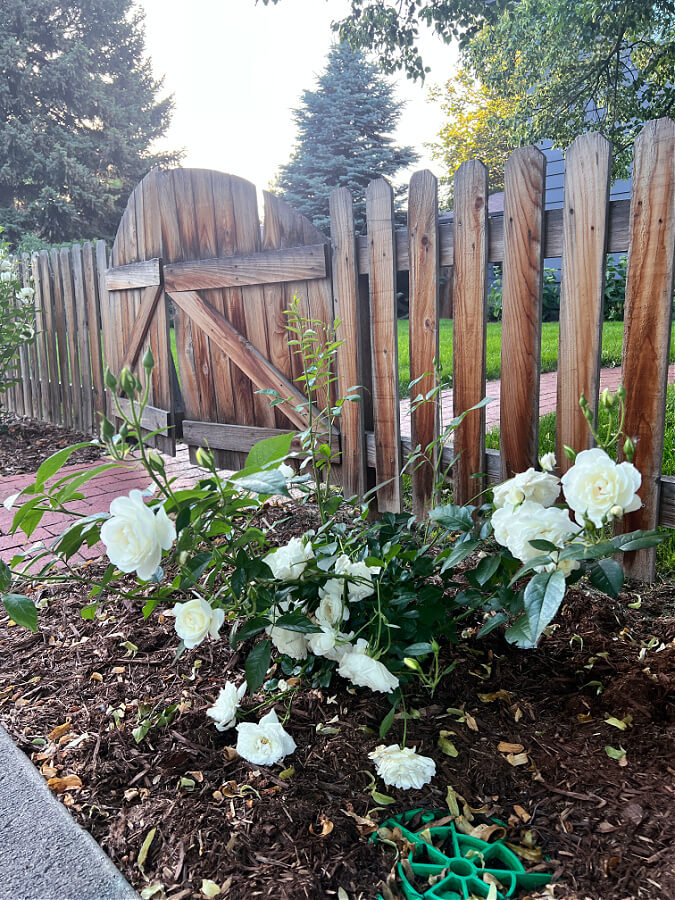
Benefits of Iceberg Roses
As a rose lover, I have found that Iceberg roses are one of the most popular and beloved varieties of roses. Here are some of the benefits of growing Iceberg roses in your garden:
Extremely Disease Resistant
One of the most significant benefits of Iceberg roses is their remarkably disease-resistant nature. They are hardy and can withstand harsh weather conditions, making them an ideal choice for gardeners who want a low-maintenance plant.
Iceberg roses are resistant to these common rose diseases, unlike other roses that are prone to conditions such as downy mildew, botrytis blight, canker, rust, and more.
Long-Lasting Blooms
Another advantage of Iceberg roses is that they have long-lasting blooms. They are known for their non-stop flowering, which means you can enjoy their beautiful blooms for months.
This makes them a perfect choice for gardeners who want a plant that will continuously display flowers throughout the growing season.
Iceberg roses are also easy to care for and require minimal maintenance. They can tolerate partial shade but prefer full sun to encourage flower development.
They also thrive in soil that is rich in nutrients, which is why it’s essential to provide proper fertilization to maintain their healthy condition.

Why are My Iceberg Roses Dying?
Several factors could contribute to the decline or death of Iceberg roses:
- Watering Issues: Overwatering or underwatering can stress the plants. Ensure the soil is well-drained but consistently moist, especially during hot weather. Avoid waterlogged conditions, as this can lead to root rot.
- Soil Conditions: Poor soil quality, such as compacted or nutrient-deficient soil, can impact the health of the roses. Amend the soil with organic matter like compost to improve its structure and fertility.
- Pests and Diseases: Common pests like aphids, mites, or diseases like powdery mildew and black spot can weaken the plants. Regular inspection and appropriate pest management measures such as insecticidal soaps or fungicides can help control these issues.
- Environmental Stress: Extreme temperatures, strong winds, or inadequate sunlight can stress the plants, leading to decline. Ensure the roses are planted in a location with suitable sunlight exposure and protection from harsh weather conditions.
- Improper Pruning: Incorrect pruning techniques or neglecting to prune can result in tangled, diseased growth and reduced flowering. Prune the roses annually to remove dead or diseased wood and encourage new growth.
- Root Issues: Damage to the roots, whether from planting too deeply, root disturbance, or girdling roots, can hinder the plant’s ability to uptake water and nutrients. Ensure proper planting depth and handle the roots carefully during transplanting.
- Nutritional Deficiencies: Lack of essential nutrients, particularly nitrogen, phosphorus, and potassium, can cause stunted growth and poor flowering. Fertilize the roses with a balanced fertilizer according to the manufacturer’s instructions.
By identifying and addressing the specific factors affecting your Iceberg roses, you can take appropriate steps to revive and maintain their health.
If the issue persists despite your efforts, consulting with a local horticulturist or extension service may provide further insights and assistance. I always ask for help!
Preparing Iceberg Roses for Winter
As winter approaches, it’s essential to prepare Iceberg roses to withstand the cold temperatures. These tips have been very helpful here in Colorado!
Begin by stopping fertilization in late summer or early fall to discourage new growth, which can be susceptible to frost damage.
Water the roses deeply before the ground freezes to ensure they are adequately hydrated.
Additionally, apply a layer of mulch around the base of the plants to insulate the roots and protect them from freezing temperatures.
Consider wrapping the canes with burlap or other protective material to shield them from harsh winds and freezing conditions.
Finally, prune the roses lightly to remove any dead, diseased, or crossing branches, but avoid heavy pruning until spring to prevent stimulating new growth.
Should Iceberg roses be cut back annually?
Yes, it is generally recommended to prune Iceberg roses annually. Pruning helps maintain the health, shape, and vigor of the plants while promoting abundant flowering.
The ideal time to prune Iceberg roses is in late winter or early spring, just before new growth emerges.
Remove any dead, diseased, or damaged wood, as well as crossing branches and inward-facing growth.
Additionally, trim the canes to shape the plants and encourage a compact, bushy habit. Avoid heavy pruning during other times of the year to prevent stimulating new growth that may be vulnerable to frost damage.
How do you winterize Iceberg roses?
Winterizing Iceberg roses involves several key steps to protect them from the cold and ensure their survival through the winter months.
Begin by thoroughly watering the roses before the ground freezes to ensure they are well-hydrated. Apply a layer of organic mulch, such as straw, shredded leaves, or bark chips, around the base of the plants to insulate the roots and regulate soil temperature.
Consider constructing a protective barrier around the roses using burlap or frost cloth to shield them from freezing winds and temperatures.
In colder regions, you may also opt to mound soil or mulch around the base of the plants to provide additional insulation.
Finally, continue monitoring the roses throughout the winter, especially during periods of extreme cold or fluctuating temperatures, and provide additional protection as needed.
Frequently Asked Questions about Growing & Caring for Iceberg Roses
Are iceberg roses heat tolerant?
Iceberg roses are known for their exceptional heat tolerance. They thrive in warm climates and can withstand high temperatures, making them suitable for gardens in regions with hot summers.
However, providing sufficient moisture during periods of intense heat is essential to ensure optimal growth and flowering.
How long do Iceberg roses last?
When properly cared for, Iceberg roses can live for many years, typically ranging from 10 to 20 years or more.
The longevity of Iceberg roses depends on factors such as proper planting, adequate watering, regular pruning, and protection from pests and diseases. With proper maintenance, these roses can continue to grace gardens with their beautiful blooms for years to come.
Should I deadhead my Iceberg roses?
Deadheading, or the removal of spent flowers, is beneficial for extending the blooming period of Iceberg roses.
By deadheading, you encourage the plant to redirect its energy into producing new blooms rather than seed production. Remove faded flowers by cutting them back to a set of healthy leaves or just above a leaf node. Regular deadheading throughout the growing season will promote continuous flowering and maintain the aesthetic appeal of the plants.
Do Iceberg roses like sun or shade?
Iceberg roses prefer full sun to partial shade for optimal growth and flowering. They thrive in locations that receive at least 6 hours of direct sunlight daily. In hotter climates, providing some afternoon shade can help protect the plants from scorching temperatures.
However, insufficient sunlight may result in reduced flowering and weaker growth. Therefore, it’s essential to plant Iceberg roses in a sunny spot with well-drained soil to ensure their overall health and vitality.
How often should I water Iceberg roses?
I generally water my Iceberg roses three times a week via our drip system, but this may vary depending on the climate and soil conditions. It’s important to keep the soil moist but not waterlogged, as this can lead to root rot. You may need to water more frequently if you live in a particularly dry or hot area.
What is the best time of year to plant Iceberg roses?
Early spring is the ideal time to plant Iceberg roses because the weather is still mild. This gives the plant time to establish its roots before the hot summer months or cold winter months set in. Make sure to plant in a location that receives at least six hours of sunlight daily and has well-draining soil.
How do I prune Iceberg roses?
I prune my Iceberg roses in late winter and before new growth appears. I remove any stems that show signs of disease or damage and cut back the remaining stems to help to promote new growth and keep the plant healthy.
Can Iceberg roses tolerate cold weather?
Iceberg roses are hardy and can tolerate cold weather (that’s why they do well here in Colorado!), but they may need some protection if the temperatures drop below freezing. I usually mulch around the base of the plant with a layer of organic matter to help insulate the roots.
How do I fertilize Iceberg roses?
I fertilize my Iceberg roses in the early spring when new growth appears and again about two months later. I use a high-nitrogen fertilizer. Overfertilizing can result in excessive foliage growth and fewer blooms, so it is important to avoid doing so.
Shop Roses and Rose Care
Ultimate Guide to Growing and Caring for Iceberg Roses
Iceberg roses are an excellent choice for gardeners who want a low-maintenance plant that is disease-resistant, has long-lasting blooms, and is easy to care for. They will stand out in any rose bed or garden thanks to their stunning flushes of fragrant blooms set against lovely foliage. I couldn’t help but share these beauties with you! So what do you think? Will you be adding Iceberg roses to your garden?
I’d love to have you hang out with me some more! Feel free to follow along with me on any of the platforms linked below.
LTK | Facebook | Instagram | Pinterest | Amazon




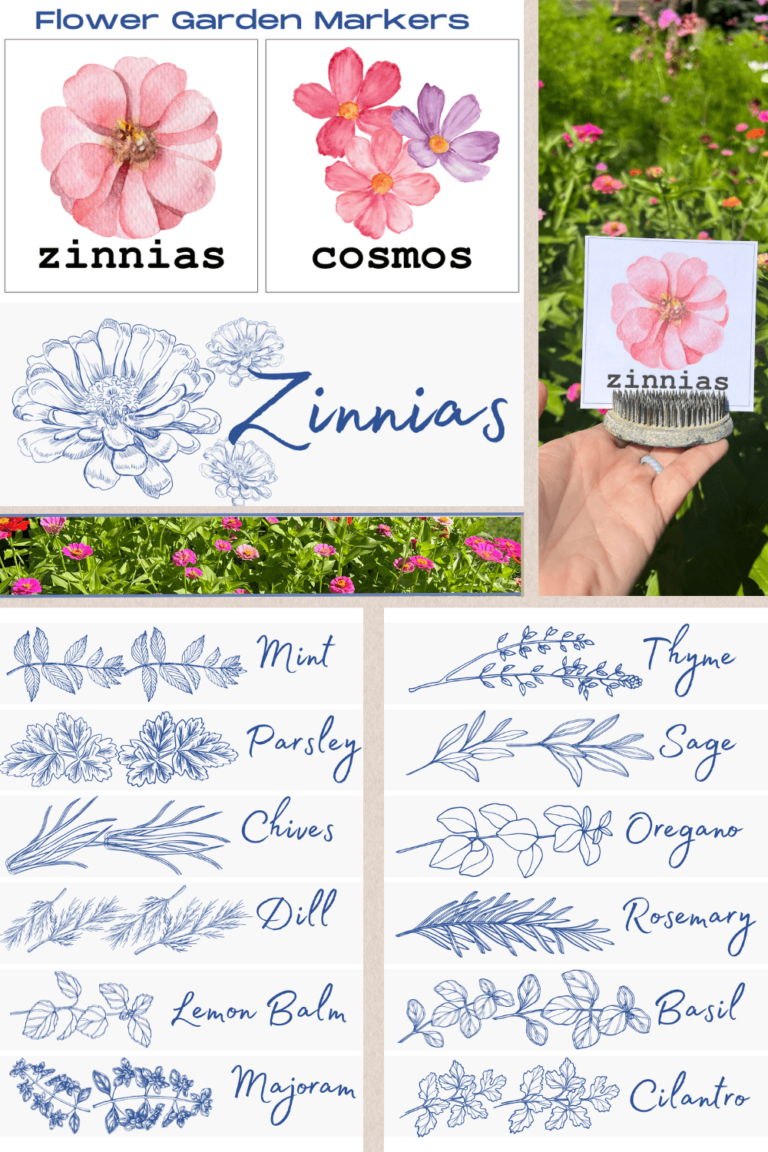

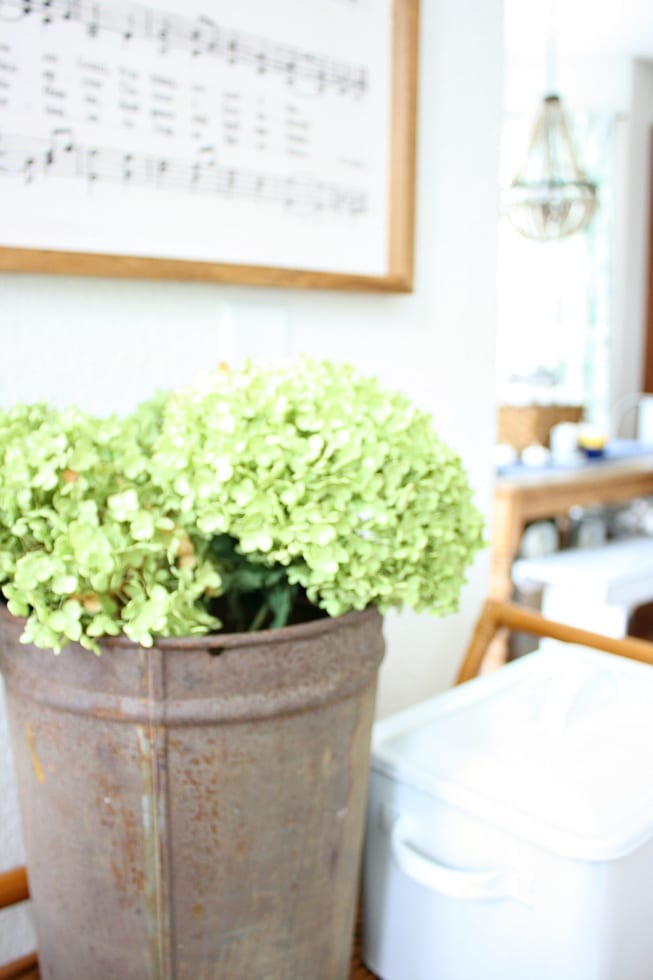
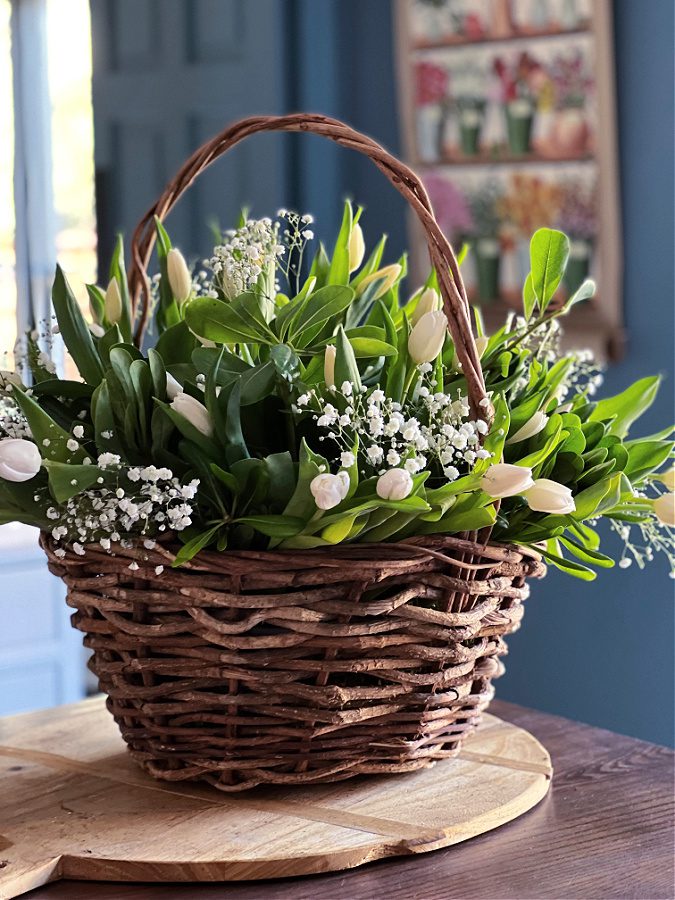

This is good info. I love mine and they are the workhorses of the garden!
Thanks you mom, and I agree!